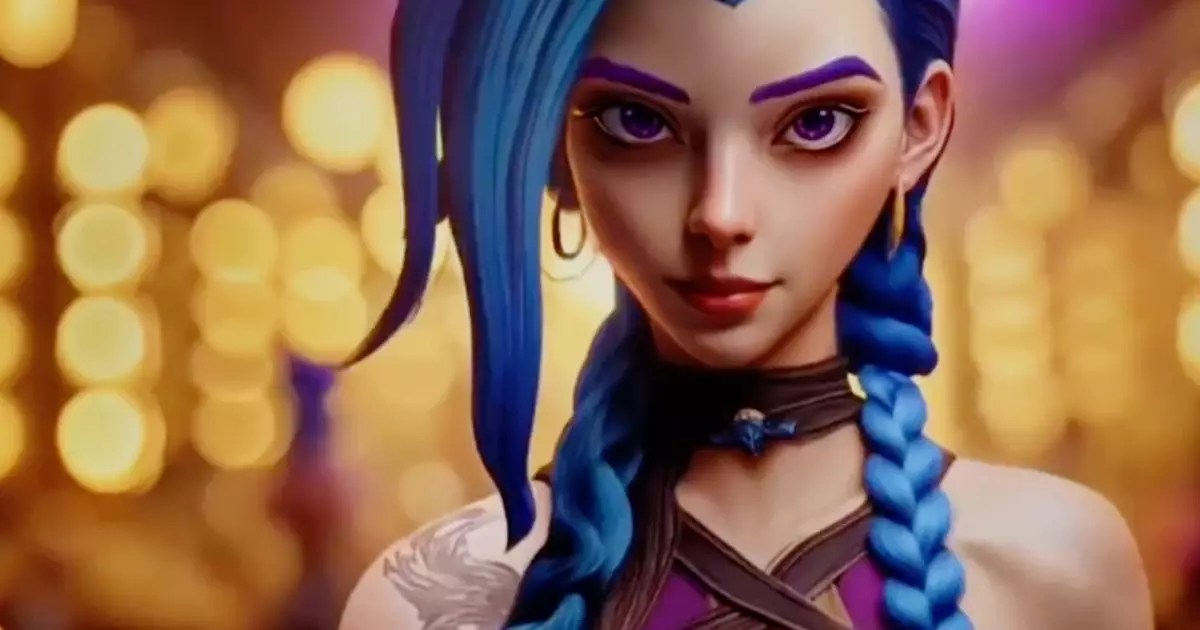The recent fallout surrounding Riot Games’ Wild Rift anniversary video highlights a crucial moment in the evolving relationship between artificial intelligence and the gaming industry. Instead of showcasing polished, carefully curated content, it appears that the company inadvertently championed a product riddled with glitches, misalignments, and a general sense of digital chaos. This embarrassing episode underscores a larger issue: the uncritical adoption of AI tools without fully understanding their limitations, especially in high-visibility platforms.
The video in question, which was meant to serve as a celebratory highlight for Wild Rift’s third anniversary, instead became a digital spectacle of imperfections. Characters like Jinx, Seraphine, and Yasuo, traditionally beloved by fans, appeared distorted and unsettling — their faces rubbery, movements awkward, and visuals marred by garbled effects. Beyond the visual chaos, the content’s linguistic elements added to the confusion, with lyrics that seemed to evoke teen slang or nonsensical phrases, further distancing the audience from a cohesive celebratory message.
What underscores this incident is the failure in quality control and transparency. Riot’s executive producer David Xu’s response was somewhat deflective, emphasizing that the video was “creator-made” and that they would “do better.” While this apology hints at a recognition of shortcomings, the absence of a candid admission regarding the AI origins of the content reveals a troubling disconnect. By not explicitly acknowledging the role of AI, Riot risks cultivating skepticism and distrust among its community, which values authenticity and quality.
It’s worth examining the broader implications of deploying AI-generated art and videos in a setting intended to showcase excellence. AI, despite its rapid advances, remains a tool still maturing—capable of producing impressive work but equally prone to inaccuracies and disfigurements when misused. When major brands like Riot jump into AI-fueled content creation without thorough vetting, they risk undermining their credibility. Fans are quick to notice inconsistencies, and the online reactions are often unforgiving. The incident becomes less about a mistake and more about a wake-up call to reconsider how AI is integrated into visual storytelling and public relations.
Furthermore, the origin story of the video points to a concerning trend: the outsourcing of creative efforts to third-party AI production companies, such as the allegedly involved ‘Outliers.’ These entities specialize in using AI to craft stylistic content, often with little oversight or quality assurance. While such vendors promise efficiency and novelty, they may neglect the importance of coherent storytelling and aesthetic harmony—resulting in content that looks more surreal than celebratory. The notion that a company would uncritically upload such experimental content onto their official platforms suggests a problematic prioritization of rapid production over thoughtful presentation.
This incident exposes a vital question: should gaming companies fully embrace AI tools, or should these technologies be approached with caution? While AI can revolutionize art creation and reduce costs, it also demands a new set of standards and oversight practices. Content that appears laughably flawed could quickly erode a brand’s perceived professionalism if not handled responsibly. Riot’s lack of transparency and delayed acknowledgment serve as cautionary tales for others eager to experiment with AI in their next campaign.
In the end, Riot’s misstep functions as a mirror reflecting the wider industry’s growing pains with artificial intelligence. It presents an opportunity for introspection: how do developers, publishers, and content creators balance innovation with accountability? As AI tools become more accessible, their responsible use will determine whether they serve as a boon for artistic expression or a source of digital chaos. Riot’s experience, while embarrassing, underscores the necessity for critical oversight and honest communication—a lesson all big names in gaming should heed moving forward.


Leave a Reply